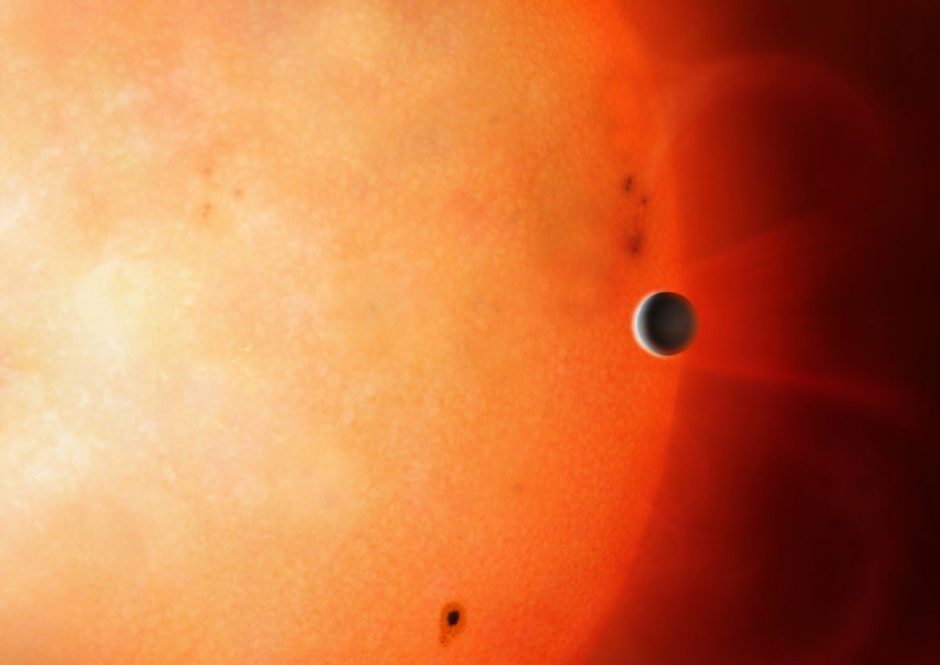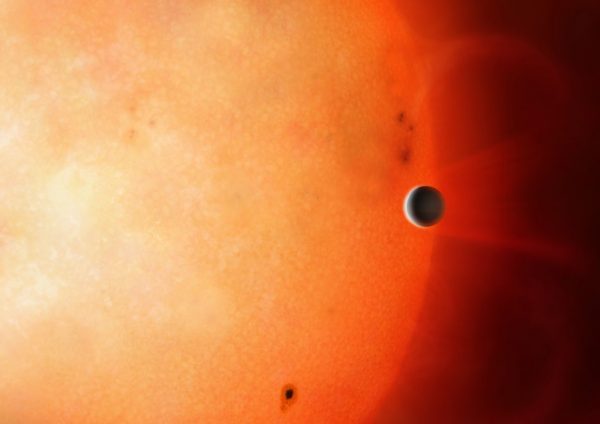‘Forbidden’ planet found in ‘Neptunian Desert’

For the first time, an international team of astrophysicists, including members of PlanetS, discovered a new kind of exoplanet in the Neptun desert, an area where no such exoplanet had been identified to date.
An international team of astronomers, leading by the Warwick University and including members of PlanetS, have found a “forbidden” planet three times the size of Earth an area known as the Neptunian Desert, a place where it should not exist. Also known as NGTS-4b, the exoplanet has a mass of 20 Earth’s and a radius that is 20 percent smaller than Neptune. Orbiting its star every 1.3 days, it has a temperature approaching 1,000 degrees Celsius. Yet, it still has its own atmosphere, something that has caused researchers to scratch their heads. NGTS-4 was observed using a single NGTS camera over 272 nights between Aug. 6, 2016 and May 5, 2017, from the Next Generation Transit Survey in northern Chile.
« This planet is right in the zone where Neptune-sized planets could not survive », says François Bouchy, professeur at Geneva University and member of PlanetS. « It is truly remarkable that we found a transiting planet via a star dimming by less than 0.2 %. From the ground, only transits of exoplanets the size of Jupiter causing a 1% decrease in the star’s luminosity are detected », explains François Bouchy, member of the NGTS consortium. However, NGTS telescopes can detect transits of only 0.1%, an accuracy never before achieved by photometric measurements from the ground. And it was precisely this precision that allowed astronomers to discover the exoplanet NGTS-4b with only 3.2 terrestrial rays.

The “forbiddent” planet NGTS-4b in front of its star (credit Warwick University).
The Neptunian Desert is an area of space near a star where no planets that are similar in size and scope to Neptune had been previously found. Against the odds, NGTS-4b is located firmly in this area. It’s unclear why NGTS-4b is able to exist in the Neptunian Desert, though the researchers have offered two explanations: it moved into the region within the past 1 million years or it was very big and the atmosphere is still evaporating.
Thanks to the discovery of NGTS-4b, researchers are going to recheck their data and see if it yields any other surprising finds. The NGTS consortium is now continuing the analysis of light curves and spectroscopic monitoring of planetary candidates in synergy with NASA’s TESS space mission, so that other planetary systems comparable to NGTS-4b can be discovered. The Neptun desert may be greener than we think.
The research has been published in Monthly Notice of Royal Astronomical Society : https://doi.org/10.1093/mnras/stz1084
Neptunian desert.
The Neptunian Desert is the region close to stars where no Neptune-sized planets are found. This area receives strong irradiation from the star, meaning the planets do not retain their gaseous atmosphere as they evaporate leaving just a rocky core. However NGTS-4b still has its atmosphere of gas.
Categories: News
